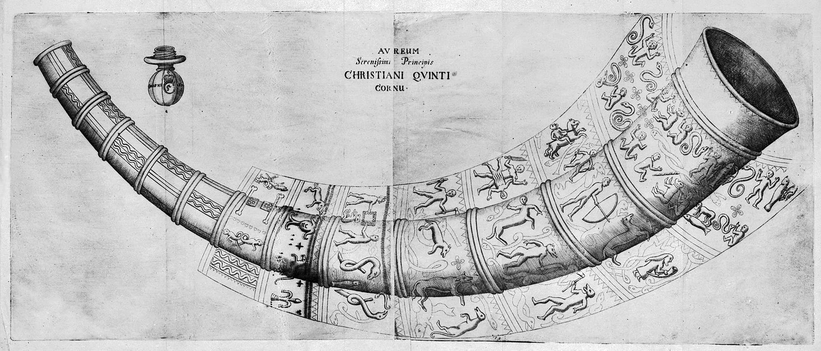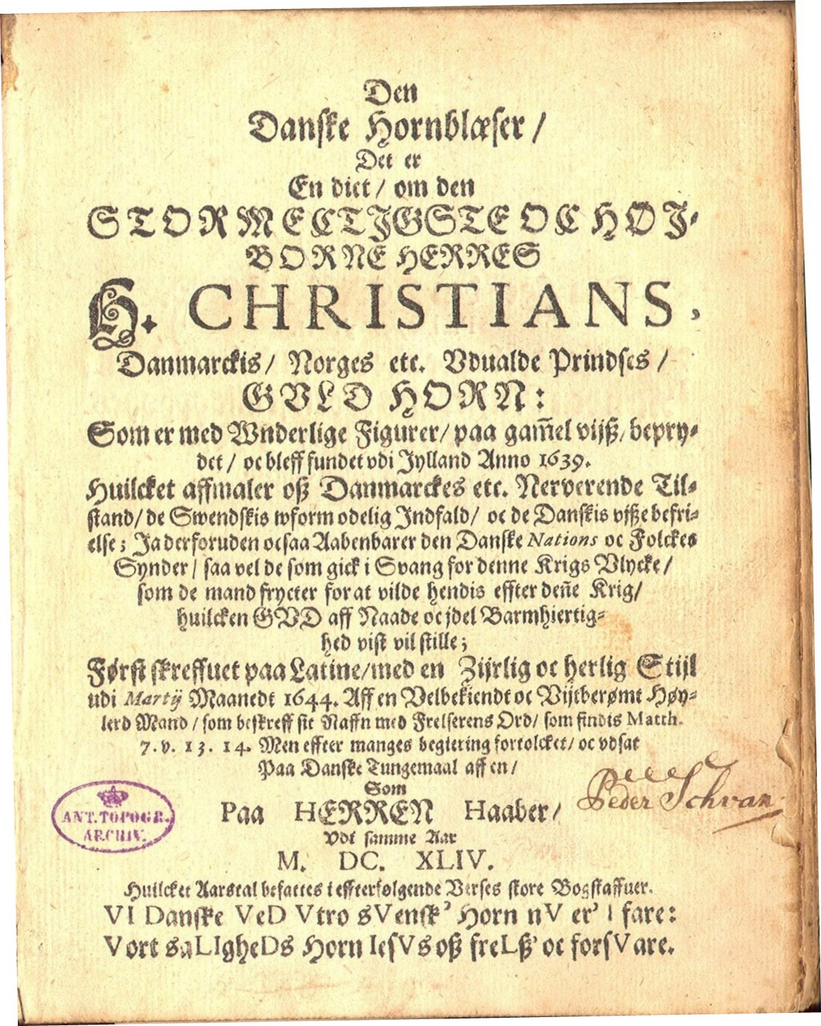
The Golden in the 17th century
The longest of the golden horns was found in 1639 and described by Ole Worm in the book 'De Aureo Cornu', 1641. The German professor at Soro Academy Hendrich Ernst, disagree with Worm’s interpretation of the horn. Ernst believed that the horn came from Svantevits temple on Rügen, while Worm interpreted it as a war trumpet from the time of Frode Fredegods, decorated with pictures, calling for virtue and good morals. Worm immediately sent his book to Prince Christian and the scholars at home and abroad. You can see in his letters, that not only did the horn make an impression, but also the letter and the interpretation. In that same year there were such lively discussions on the horn among the scholars of Königsberg, now Kaliningrad!
In 1643 Worm reiterated the description of the golden horn in his great work on Danish runic inscriptions, 'Monumenta Danica'. In 1644, his descriptions of the horn reached for scholars and libraries in Schleswig, Königsberg, London, Rome, Venice and Padua. Several learned men wrote poems for him, and the golden horn was mentioned in an Italian manus. Map Cartoonist Johannes Meyer placed the finds on several of his map of South Jutland.
When the Swedish commander Torstensson attacked Jutland in 1643, Peter Winstrup wrote a long poem in Latin addressed to the bishop of Scania (which at that time still belonged to Denmark), the poem was called 'Cornicen Danicus'. It was immediately translated into Danish, entitled 'The Danish Horn Blower'. He interpreted the horn and its images as an warning of war, and his interpretations were very hostile to the Swedish. Paul Egard and Enevold Nielssen Randulf were among some of the other scholars who interpreted the Golden Horn In the 1640s. They were both deans in Holstein, and had a more Christian interpretation of the horn.
All these works were illustrated with copies of Worms depictions of the horn. The Golden Horn remained known throughout the 1600s, both in terms of interpretations of the horn and designs. The found of the short golden horn in 1734 renewed the interest of the meaning of the horns.

